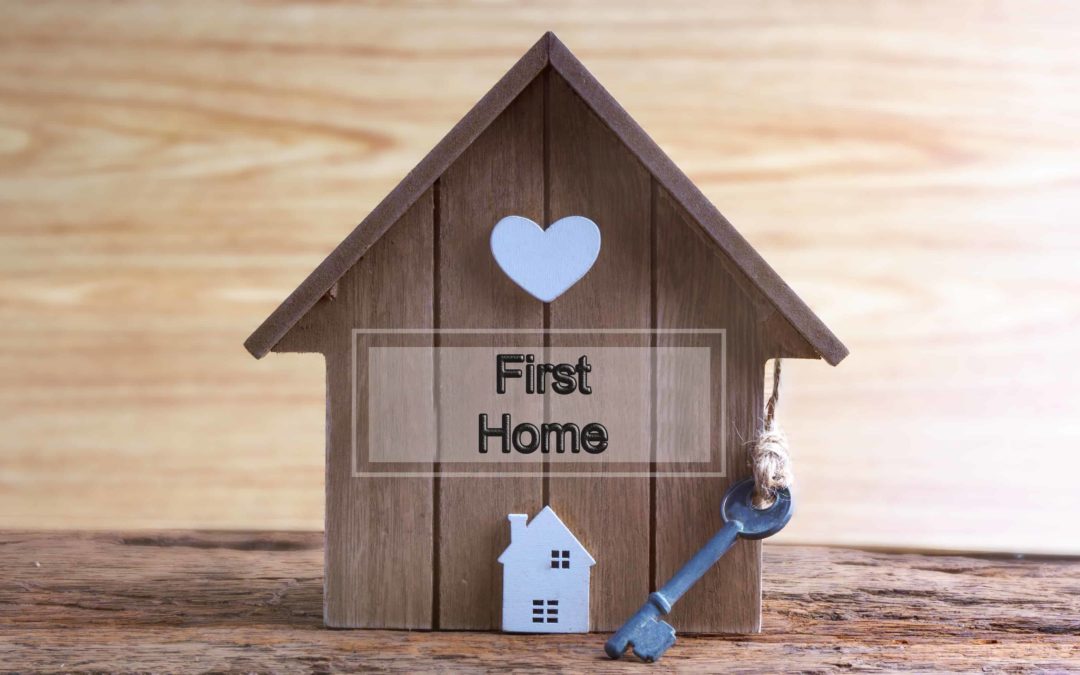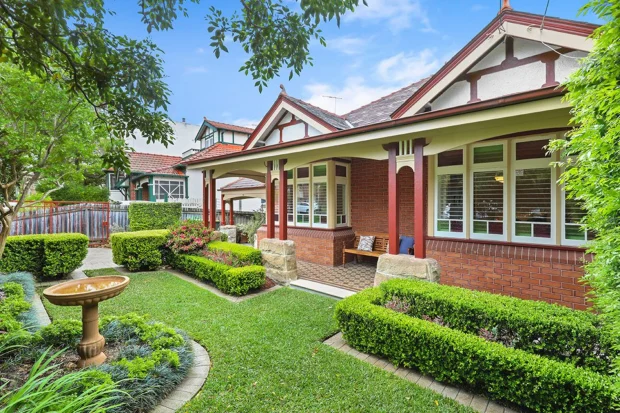Real Estate
First-Home Buyer Scheme at Risk: Greens Concerned About Impact

A long-awaited federal government scheme that would allow first-home buyers to enter the market with a 2 per cent deposit and co-own their property with the government is stuck in the trenches following threats by the Greens to sink it in the Senate.
The Help to Buy scheme is the newest proposed form of federal aid for first-home buyers. It would allow home buyers to co-own their property with the government by sharing the equity ( up to 30 per cent for existing dwellings and 40 per cent for new ones ), which would effectively make mortgage repayments more affordable.
The buyer wouldn’t need to pay rent on the stake owned by the government. If the property was sold before the equity was bought back, then the government would also have a share in the profit based on the amount of equity it owned.
However, the Greens currently oppose the proposed bill, claiming it would only help a small pool of Australians (40,000 over four years), that it may push up property prices even further, and that it will not fix the current lack-of-supply crisis.
“Unless Labor is prepared to work with the Greens to fix negative gearing and capital gains tax handouts, cap rents and build public housing, the Greens will vote against Labor’s housing lottery bill in the House, and we reserve our position in the Senate,” Greens leader Adam Bandt said last week.
AMP Capital chief economist Shane Oliver agrees that the scheme will not “solve the underlying problem” of undersupply.
“We really need to see more social housing, more affordable housing overall, and perhaps a reduction in red tape to really help speed up getting this supply to market,” she says.
| Dec-23 | Dec-22 | YoY | 5-year change | |
| Canberra | $800,000 | $800,000 | 0.0% | 42.6% |
| Adelaide | $595,000 | $517,000 | 15.1% | 61.7% |
| Brisbane | $635,000 | $560,000 | 13.4% | 51.2% |
| Darwin | $460,750 | $450,000 | 2.4% | 15.2% |
| Hobart | $530,000 | $550,000 | -3.6% | 55.3% |
| Melbourne | $678,000 | $670,000 | 1.2% | 16.9% |
| Perth | $505,000 | $435,000 | 16.1% | 31.6% |
| Sydney | $927,250 | $870,000 | 6.6% | 38.0% |
| Australia | $545,000 | $492,000 | 10.8% | 47.3% |
“There are many state-based incentives, and there are shared equity schemes in certain parts of Australia,” she says. “There are state-based incentives out there that are designed to help, such as first-home buyer grants.”
Oliver adds this isn’t the first time the Greens have pushed back against a proposed housing policy, and he expects the parties will reach a compromise as they have in the past.
“If it is blocked, we’ll just move on to the next thing,” he says.
Will Help to Buy make properties more expensive?
“Anything that activates and brings people to market when it’s not complemented with high levels of supply pushes prices up,” Powell says.
Domain’s latest First Home Buyer Report found that the median entry-price house for an Australian couple aged 25-34 increased by 10.8 per cent in the past year, and entry-price units increased by 9.1 per cent.
The price of an entry-level home in Brisbane skyrocketed from $560,000 in December 2022 to $635,000 in December 2023, in Adelaide by 15.1 per cent from $517,000 to $595,000, and in Perth by 16.1 per cent from $435,000 to $505,000.
While it’s possible the proposed scheme could push entry-level prices further up, Oliver believes the impact would be “relatively minor” due to recently low first-home buyer activity as a result of higher interest rates.
According to Australian Bureau of Statistics data, first-home buyers committed to 110,000 new loans in 2023 – much lower than 118,000 in 2022, 163,000 in 2021, and 136,000 in 2020.
Help to Buy alternatives for first-home buyers
If the Help to Buy sinks, first-home buyers still have several grants and schemes available to access.
“It is a difficult market for first-home buyers, and the federal and state governments have recognised this,” says Mozo banking and rates expert Peter Marshall. “There are a range of schemes that prospective home owners can tap into from one-off grants, or reduced or no stamp-duty to deposit savings schemes like the super saver scheme that allows you save money for your first home in your super fund.
“But in addition to the grants and schemes available, first-home buyers need to do their due diligence on their choice of home loan as this is going to have by far the largest long-term financial impact on them.”
Grants and schemes available to first-home buyers include:
- First Home Guarantee (or First Home Loan Deposit Scheme ). You can buy property with just a 5 per cent deposit without paying lender’s mortgage insurance. Property caps apply depending on the city and region.
- First Home Super Saver Scheme. You can make voluntary contributions to your super (up to $15,000 every financial year) and withdraw up to $30,000 to later use as a home deposit.
- Family Home Guarantee. Single parents can buy a property with a 2 per cent deposit without paying lender’s mortgage insurance.
- Regional First Home Buyer Support Scheme. You can buy a property in regional Australia with just a 5 per cent deposit without paying lender’s mortgage insurance.
- First Home Owner Grant. You receive a monetary grant towards buying a newly built property. The amount received varies from state to state and property caps apply depending on the state.
- Stamp duty waivers and concessions. These vary from state to state and are generally capped to the purchase price.
Real Estate
Aintree and Balwyn North Among Top-Growing Suburbs in Melbourne

A mix of middle and outer Melbourne suburbs can be revealed as the city’s best performing over the past five years, after the house price medians grew as much as 40 per cent in some locales.
South-eastern Narre Warren North recorded the largest jump, up 38.4 per cent to the end of December, to a median of $1,693,000 on Domain data. It was followed by growth suburb Aintree (up 34.8 per cent to $755,000) and inner-eastern Balwyn North (33.4 per cent to $2,375,000).
Unit prices grew the most in Mitcham, where they jumped 21.3 per cent over the five years to $752,000. It was followed by Highett (19.6 per cent to $658,000) and Brighton (17.9 per cent to $1.2 million).
Melbourne’s overall median house price rose 22.1 per cent in the same period. Although it remains below its peak, the market has somewhat improved in recent weeks as clearance rates point to modest price rises and home buyers show renewed activity in expectation of a Reserve Bank rate cut later in the year.
The analysis excludes the Mornington Peninsula, but growth was even stronger in popular sea-change destinations that swelled during lockdowns such as Blairgowrie, Sorrento and Rye, which were up 66.3 per cent, 52.9 per cent and 52.8 per cent, respectively.
KPMG planning and infrastructure economics director Terry Rawnsley said strong results in suburbs further from the city reflected entrenched affordability issues and lockdown-era preferences for larger homes.
“There’s definitely a ripple effect coming through those middle-ring suburbs,” he said. “They’ve been priced out of the [more inner] inner suburbs and are heading out along the train lines by a couple of stops.
“There’s definitely places in the middle-ring suburbs where people wanted to get out of the inner city. The two-bedroom townhouse was less appealing than the detached four-bedroom house.”
Narre Warren North in particular reflected this trend; recent buyer Edward Hao said he saw great value in the leafy suburb.
“I moved from Bentleigh East … we loved [Narre Warren North] because the price is affordable. When you pay the same price you can’t buy your dream house anywhere in Melbourne, but you can buy your dream house there,” he said. “We love the animals, you can see kangaroos. The mountains are visible and there’s no traffic.
“We never asked our friends to come [visit in Bentleigh East] because the streets are too narrow, and the streets are packed up. There’s no room for them to come and park.”
Belle Property Berwick director Anne Haynes sold Hao his new home in Fontaine Terrace, Narre Warren North for $3,388,888. She said other buyers were replicating Hao’s move out from smaller inner suburbs.
“We’re getting international buyers, but we’re also getting buyers from inner suburbs, say Bentleigh, Oakleigh, and everywhere in between who are living on cramped smaller blocks,” she said. “If you move out to Narre Warren North, it’s tranquil and peaceful.”
Haynes said a diverse mix of properties meant buyers of most budgets had options in the acreage suburb.
Ray White Berwick director Debbie Brettoner said it had also benefited from the opening of a new mosque which had proved attractive to the Islamic community.
“The mosque has brought a lot of people out of Dandenong and Hallam, and they want the bigger blocks of land, closer to the mosque,” she said. “And then COVID. People said, ‘I can work from home, I want the peace and tranquillity of the big block’.”
Brettoner said it was common for homeowners to try to stay in the area after selling.
“I sold a house for someone who looked to see if they could find something for 12 months,” she said. Those buyers ended up buying in nearby Berwick after giving up on their first choice of suburb, Brettoner said.
Rawnsley said a strong five-year result in a growth suburb like Aintree reflected a maturing of a greenfield market, as developers began shifting away from building entry-level homes to cater for local upgraders.
“The suburbs out towards Melton is reflecting a fuller build out of the community,” he said. “As those markets pick up [developers] try to pick up the margins a bit.”
Harcourts West Realty listing agent Matthew Farrugia said newer stages of the suburb’s development that were more expensive had been popular with previously entry-level buyers.
Farrugia said the opening of a new private school had also proved to be a drawcard, even drawing interest from overseas.
“There’s a fair bit of multicultural people there. It’s a very strong Indian community,” he said. “A lot of [growth] came once the school [Bacchus Marsh Grammar] came through. It just boosted it by heaps and then the lockdown came through, it was like a double effect.”
Farrugia said properties tended to be larger to accommodate multigenerational families, which also kept prices high.
“If you drive through Aintree, they’re predominantly double-storey houses,” he said. “There’s a lot of million dollar homes there because they’re all big.”
Real Estate
Sydney House Prices Surge: Leppington Tops Growth List with a 112.9% Rise

House prices in every Sydney suburb are more expensive than five years ago, new data reveals.
In Leppington, a stone’s throw away from Sydney’s upcoming second airport, house prices more than doubled. The median of the fast-developing suburb jumped by 112.9 per cent to $1,162,500 in the five years ending December 2023 on Domain data.
A string of nearby suburbs also made it onto the top 20 list of the strongest growing suburbs in the same period, including Denham Court (up 66.7 per cent), Harrington Park (up 62.8 per cent) and Gledswood Hills (up 59.1 per cent).
Blue chip suburbs near beaches and in the inner city also recorded some of the strongest growth in Sydney in the past five years. Bronte jumped 78.2 per cent to a median of $5.8 million, Glebe grew 72.8 per cent to a median of $2.73 million and North Bondi increased 67 per cent to $4,275,000.
Sydney’s overall median house price has risen 49.5 per cent since December 2018.
St George chief economist Besa Deda said Sydney house price growth would likely continue in the next year, albeit at a slower pace.
“During COVID, the Reserve Bank cut back to a historically low level and that did encourage economic activity and buyer activity, particularly once we reopened the economy and borders,” Deda said.
This was happening against a backdrop of lower building approvals and less housing construction – all pointing to a chronic shortage of homes in the face of ongoing demand.
“There’s a housing shortage. There is a very large increase in the population that’s coming through, and the labour markets remain tight as well. That is helping support dwelling prices,” she said.
While Deda expects house price growth to continue, it will slow down thanks to higher interest rates, which has stretched affordability.
“We expect price growth to continue in Sydney but not at the same pace as last year. The rate of growth would moderate,” she said, adding that rate cuts would contribute to fresh pressures.
North Bondi sellers Yvonne Strasser and Cary Fraser hope to capitalise on the house price growth of the suburb to downsize in the postcode they bought into in 2018.
“We’ve done a renovation on the property and the home is beautiful. We absolutely love the home. Once you’re up in the tree house, you’re away from everything and feel like you’re on holiday,” Strasser said. “Hopefully, we can capitalise on the growth and stay in North Bondi.”
She said the suburb was perhaps once undervalued and has only burgeoned in recent years.
“Before it could maybe be seen as a little bit rundown, but now it’s becoming a bit more gentrified,” she said.
“With all of the new developments, not necessarily the houses, but just places to go, even down the promenade. They’re doing the pavilion up. They’re making it more of an area people want to go to, it’s brought more people to the area.”
Their selling agent Warren Ginsburg of Ray White Double Bay, who is guiding $6 million on the North Bondi property, said blue chip suburbs soared to new heights during COVID.
“It’s due to people wanting better lifestyles, they want proximity to beaches and to cafes and restaurants,” Ginsburg said.
He said young families, successful business owners and cashed-up downsizers were propelling house price growth in the eastern suburbs.
“It’s definitely young families who have had success in business in the past few years and are upgrading and there are a lot of downsizers who have sold their properties for significantly more than they expected are now downsizing into that market and are cashed up and driving the prices up.”
Ginsburg said these areas will continue to rise as the combination of lifestyle and proximity to amenities remains desirable.
Meanwhile, house prices in far-flung suburbs on the outskirts of the city recorded impressive jumps in the past five years due to their relative affordability, as many sit well below the citywide median of $1,595,310, as well as their proximity to fast-growing infrastructure and amenities.
“Denham Court, Gledswood Hills. They’re all within a kilometre radius of Leppington. We’ve got the railway station, you’ve got the airport coming. You can see that being built, and it’s a realisation,” said Michael Cavagnino of LJ Hooker Leppington.
“It’s all about accessibility and affordability. We’ve had a lot of people moving out from the inner suburbs because the station is there as well as the flexible working arrangements.
“We’re finding a lot of first home buyers and people who are upsizing are driving the growth,” he said, as well as investors. “Leppington as well is the strategic centre of the south-west. I can see it being like Parramatta, like Sydney’s third city.”
Real Estate
Rising Home Prices Prompt Millennials to Move Back In

As median house prices soar and the wage gap widens, data reveals that adult children are having to move back in with mum and dad as a recourse to save for a deposit. Children already at home are also choosing to stay in the nest for longer.
“If words like ‘kidults’ and ‘boomerang children’ are increasingly popping up in your conversations, it’s because kids are living at home for longer,” explains Domain Property Editor, Alice Stolz, on Today.
A study from the Melbourne Institute on household dynamics shows that almost a third of 26- to 29-year-olds were living at home in 2021, a significant shift from 2001.
“It really is based around the fact that house prices have doubled in some parts of the country and the time to save a deposit has increased so much and is much harder,” Stolz explains.
Domain data shows that in Sydney, the 20 per cent deposit required to buy a property has more than doubled between 2013 and 2023, from $151,000 to $319,000, with hopefuls needing an extra $168,000 to add to the honey pot – with wages failing to keep up with soaring house prices.
In Melbourne, that figure was $114,000 in 2013 and now sits at $209,000 as of December 2023.

Since 2012 to 2023, average wages rose about 30 per cent, on ABS data. Dwelling prices across the capital cities have jumped close to 90 per cent.
“Often, moving home rent free or even paying a lodging amount to parents [makes it] so much easier to get that deposit than having to pay rent at the same time,” says Stolz.
A new report has also found stamp duty is costing buyers over five times more than what it did just one generation ago.
For those able, choosing to remain in the family home can be the opportunity needed to crack into an increasingly aggressive housing market.
But Stolz advises on how to keep things harmonious for everyone involved, especially mum and dad.
“Many people can actually enjoy this unexpected bonus time, but I do think boundaries are required. So for adult kids doing this, you can’t behave like a 13-year-old, you need to chip in and contribute, and have an egalitarian household.”
This includes not treating the home like a hotel, contributing to household needs whether that be through chores or some money towards utilities or groceries, and being disciplined about savings goals.
Parents are encouraged to respect boundaries and split household chores.
“It’s a rare chance to live rent free, so make the most of it,” confirms Stolz.
“For parents, you’re giving your child a priceless chance to get a really big headstart in life, so be really proud of what you’re doing for your child.”
Further confirming the property market is strong despite inflation and mortgage hikes, auction clearance rates for last weekend’s Super Saturday were robust, with 70 per cent clearance in Adelaide, 67 per cent in Sydney, 62 per cent in Melbourne, 52 per cent in Canberra and 49 per cent in Brisbane.
In other housing news, the final Block house of Leah and Ash for $3.125 million, after famously passing in at the auctions last year.
Domain exclusively revealed a deal was inked last Thursday evening after a bidding war for the property broke out between two buyers, one of whom is understood to have been a high-profile celebrity.
“It went to a buyer who is apparently based in Malaysia,” says Stolz. “This made Leah and Ash come third in the final Block auction order, so it goes to show good things come to those who wait and if you pass in it doesn’t always mean you’re not going to make some money.”
-
Business2 years ago
How to Earn Money Writing Blog Posts in 2023: A Comprehensive Guide
-
Games2 years ago
How does Dead Space Remake enhance the Horror Classic of 2008
-
Video2 years ago
Everything you need to know about Starfield
-
Health2 years ago
How is Yoga and Pilates Bridging the Gap Between your Mind and Body
-
Health2 years ago
Migraine medications significantly improve the quality of life
-
World2 years ago
Swiss Pharma Powerhouse Acino Expands into Latin America with M8 Pharmaceuticals Acquisition
-
Self Improvement2 years ago
Enhancing Relationships and Emotional Intelligence Through Mindfulness Meditation
-
Business2 years ago
How to Use LinkedIn to Build Your Professional Brand
























